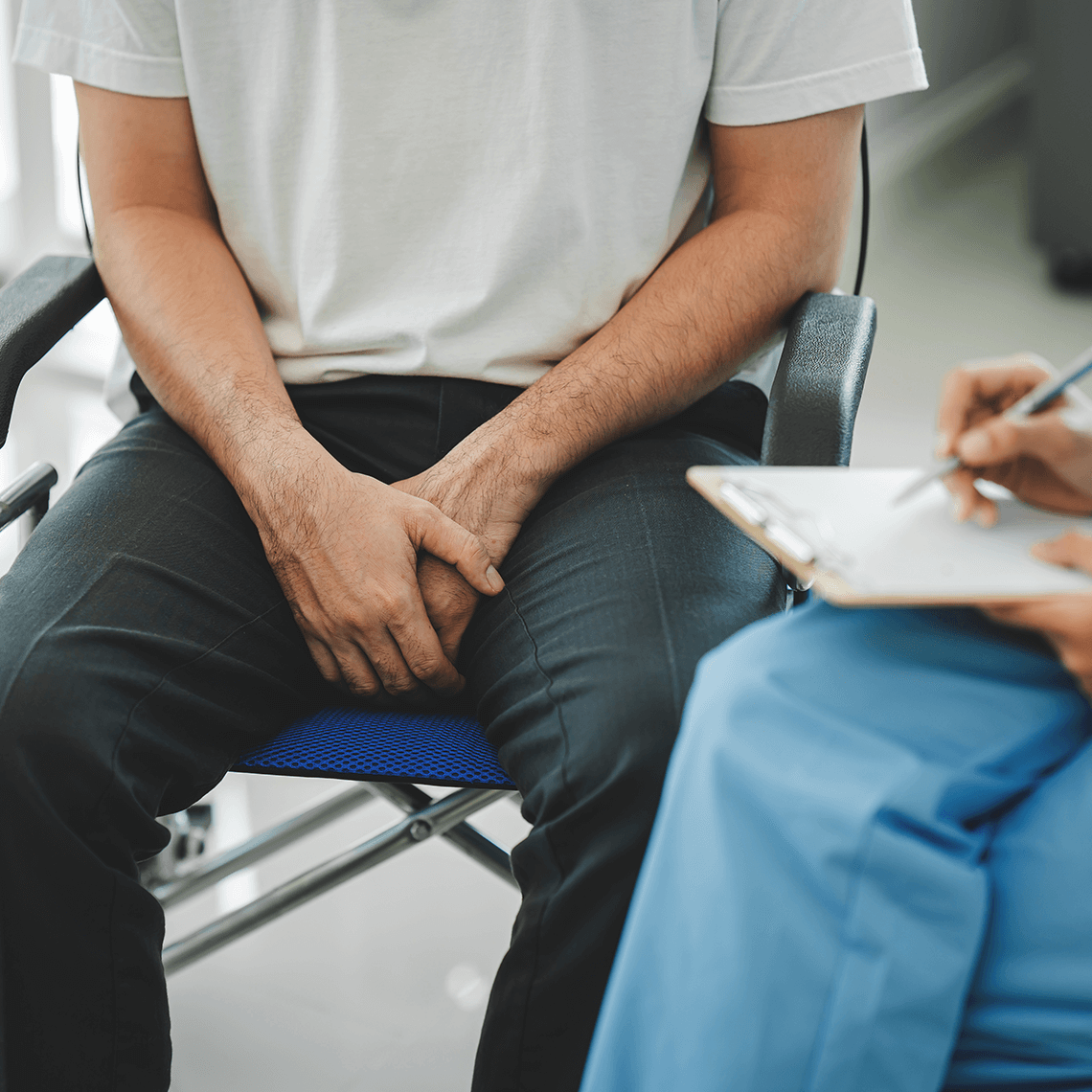Podcast
Harvard Hospitals Turn to Trusted Friend to Find Vulnerabilities
Sep 29, 2021

Commentators
- Bessie Manley Szum, RN, MPA/HA, NE-BC
- Barbara McCarthy, RN, MPH, CPHQ, CPHRM, DFASHRM
- Andrew Villanueva, MD
Transcript
Every hospital wants to know what it’s doing well and where it can improve its patient and staff safety profile. Understanding its own risks and patient care vulnerabilities is vital to an organization, but gaining that understanding is difficult. The ideal assessment would come from an outside expert, and include transparent, honest cross-departmental and cross-functional input from the people who do the work every day. And it would be without fear of penalty from an oversight body. To that end, the Harvard system’s malpractice self-insurance and patient safety company, CRICO, expanded its “Risk Assessment Program” and has been completing a record number of risk assessments for member organizations. Hospital leaders are enthusiastic about the work, because the recommendations that come out are tangible, and because CRICO assessments are conducted by the patient safety department within their own captive insurer, with no punitive component.
“Depending on the size and the complexity of the organization, the assessment can take from three to five days to complete all the interviews.”
Bessie Manley Szum has worked in a variety of clinical areas and hospital roles, including Nurse Director, and now is Director of Patient Safety at CRICO.
“What do they want to do to improve the work environment as it pertains to patient and staff safety? Basically we’re holding a mirror up to their current practices and we take away from this process the ability to identify both their strengths and importantly their opportunities that, if they address these proactively, they may prevent patient harm, and again with the ultimate goal of creating safer environments of care for both staff and for patients.”
Manley Szum says the fact that CRICO is owned by and serves the Harvard medical institutions helps to increase familiarity and trust for the participants. The risk officer for Beverly Hospital agrees. Beverly is one of six hospitals and 10 clinics that recently merged with Boston-based Beth Israel Deaconess Medical Center to form BI-Lahey Health. Barbara McCarthy is the Enterprise Risk Officer at Beverly.
“This is not the regulators. There’s no money being taken away and incentives being given. This is just how are we doing? And there’s a lot to be said for that.”
With the merger of Lahey and BI, the CRICO “Risk Appraisal Process”, or RAP for short, was offered and accepted by several entities within the Lahey orbit. The large Lahey Hospital and Medical Center had an assessment, as did Beverly Hospital along with three of its affiliates. Commonly, a risk assessment isn’t just looking for vulnerabilities. It also provides some validation for safety efforts already underway. This led to some surprises for McCarthy, a 47-year Beverly Hospital veteran, about several initiatives going on in her own facility.
“I’ll mention three things. First was a Golden Scalpel Award for great work and great safety in the OR. Did not know about that. Did not know that the Nursing Division was as far along as it was in a shared governance model in developing that. So, that was very great to hear. And the third thing that I learned was that the OB Department had really done its own, or begun its own, diversity and inclusion initiative that we then needed to link up and make sure it aligned with what the organization was doing. So, those were three really great things that I was, so, wow, that’s really cool.”
The risk assessment for Lahey Hospital and Medical Center in Burlington, MA, also discovered best practices, along with opportunities to improve. Dr. Andrew Villanueva is the Chief Quality Officer at the center. He said this kind of review intrigued him when it first became available with the merger.
“I would say that the RAP experience was positive, it was helpful, it was unintrusive, and it has led us to change some of the things that we have done and also helped us I think with specific action items based on our priorities.”
Dr. Villanueva is a 30-year veteran at Lahey. He says that having outside experts review their patient safety efforts yielded clear benefits.
“I’ll give you an example. We were very proud to talk to them about our daily safety huddle at the organizational level, and this has spawned organically huddles in different units, but it hasn’t been universal yet. And one of the recommendations from our CRICO RAP was to expand that to maybe have expectation that all of the units have huddles and that the lessons learned or the information that are gained from these huddles be funneled upward to a leadership level. I think that people who have adopted the unit huddles have found it very, very useful because they’re short, they are to the point, and it’s really done by that frontline staff. So I think that one of the things that I would like to adopt from that is to take the units, have those huddles cascade upwards so that maybe there would be an executive huddle midday, for instance, after people have had all of their huddles. We saw a model of that at Cleveland Clinic. I know that’s the structure that they have so that was a specific lesson learned.”
According to Manley Szum, the RAPs that CRICO conducts are highly structured qualitative assessments. They explore aspects of an organization’s culture of safety, and identify gaps known to increase risk of harm to patients and staff. There are three main tenets of patient safety that become areas of focus in the assessments: structure, culture, and leadership.
“When we talk about ‘structure,’ we’re talking about the structure of communication throughout an organization from the leadership. How does that cascade down to the frontline staff? And the same within a unit or a different environment of care. ‘Culture’ looks at the safety of the environment. Do staff fill out safety reports? Do they feel empowered to speak up? Do they feel as if they’re working in a safe environment and how is that data shared with them? And then ‘leadership’ looks at are the leaders visible, engaged, present? Do they model a culture of staff and patient safety?
A big piece of the value in these risk assessments is the ability to share best practices among CRICO members. Individual organizations may not have the opportunity to share and celebrate their work widely across systems, whereas, CRICO is uncovering excellent work through these assessments and can connect leaders from multiple institutions to spread the learnings. CRICO’s risk assessment at Beverly Hospital, which took place in late 2020, consisted of 138 virtual interviews with leaders, providers, and staff. For interview subjects, McCarthy sought out a diverse pool of participants, not only to help identify problems, but also to identify solutions. So that became a priority.
“You know, we needed to hear everyone’s voice in some respect. So, diversity of discipline with your provider or a leader, a board member, a medical staff leader or a medical staff member or a staff nurse or a respiratory therapist. We wanted to make sure that everyone’s voice was heard.”
The CRICO assessment team shared its findings with senior management and leaders and again with all of the interview participants. McCarthy says the follow-through communication is critical. She also sees potential to extend some good patient safety practices that CRICO found in some unnoticed corners of her own institution that could be effective if applied more widely.
“They gave shout outs to specific departments for specific, very concrete activities. What that allows us to do is really leverage those strengths. And these were nontraditional departments like Environmental Services and Facilities and our Psychiatric Departments and those places where we could really have them be best practice and expert in certain things that we would like to move across the facility.”
McCarthy says the opportunities and vulnerabilities identified in the report can be prioritized for immediate action or potentially connected to initiatives in FY 22. For Dr. Villanueva at Lahey Hospital and Medical Center, the risk assessment comes at an opportune time for longer-range planning.
“I think this is nice blueprint so it sort of gives us direction. It happens to coincide with the strategic planning process that’s going on in the institution right now. And in terms of the strategic priorities for quality, safety, and experience, this aligns very nicely. We have found it helpful enough so that they have done an analysis of our internal medicine clinic, and we’re asking them to come back to do that process for our general surgery department as well.”
Manley Szum says CRICO plans to continue conducting Risk Assessments and Service Line Assessments for its members, with a goal of conducting 15 more in 2022; helping create safer environments of care for staff and for patients. I’m Tom Augello for Safety Net.
About the Series
We’ve got you.
Our Safety Net podcast features clinical and patient safety leaders from Harvard and around the world, bringing you the knowledge you need for safer patient care.
Episodes
$1.5 Billion in Miscommunication: Medmal Data Report Finds Opportunities

Case Dismissed! Every Medical Defendant’s Dream Still Holds Some Nightmares

Expert: Communication Is Top Fix for Prostate Care Allegations

